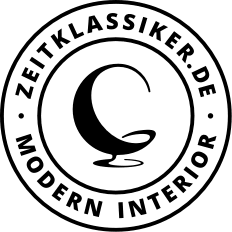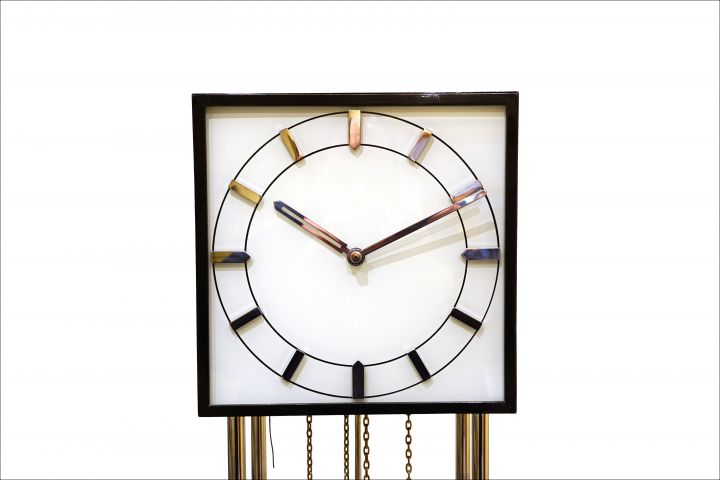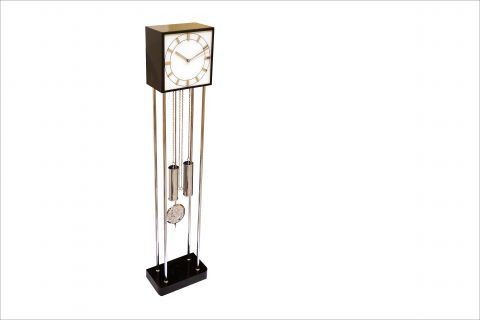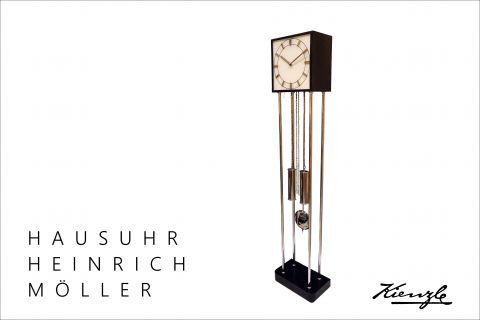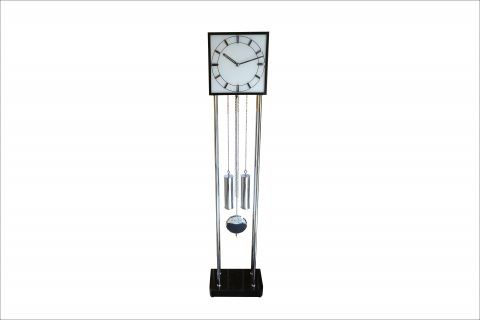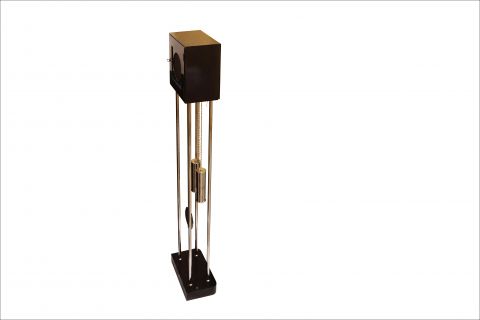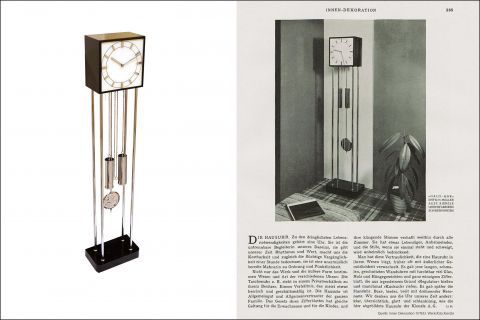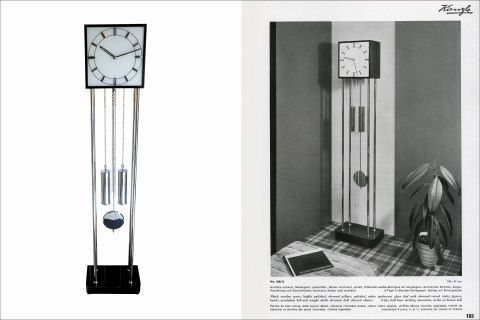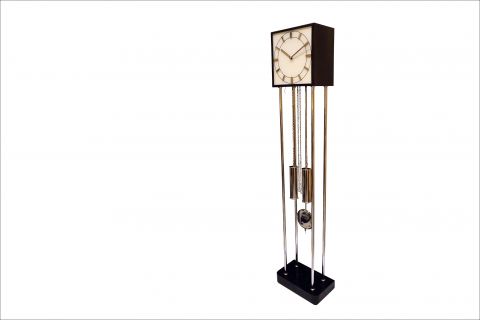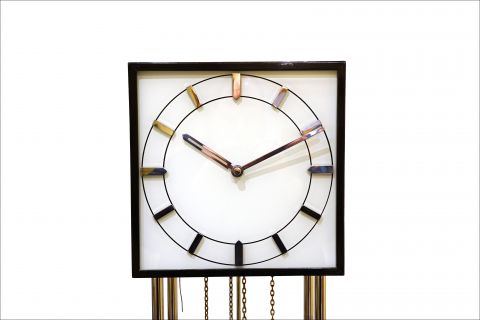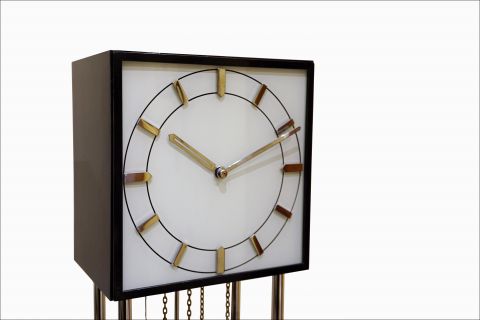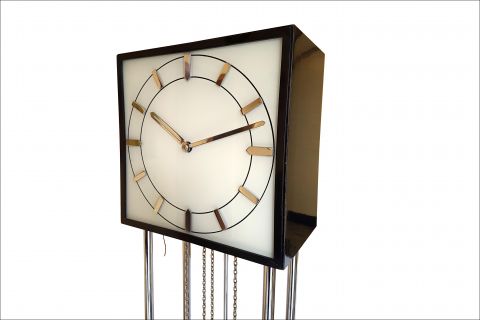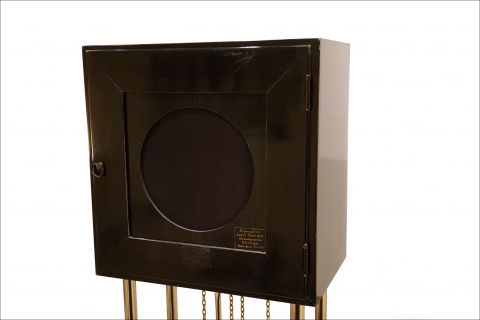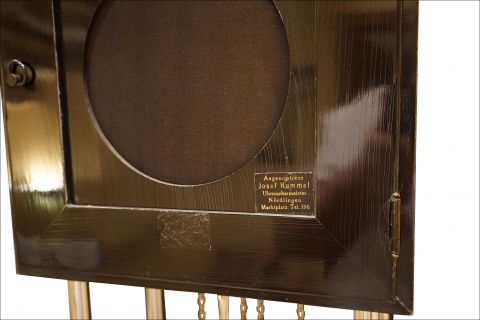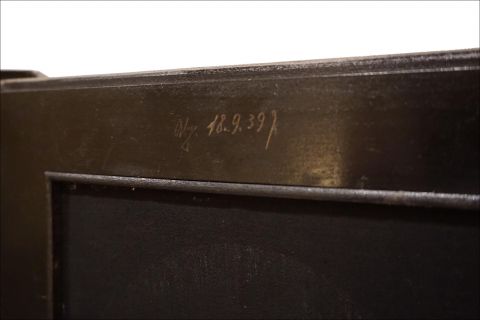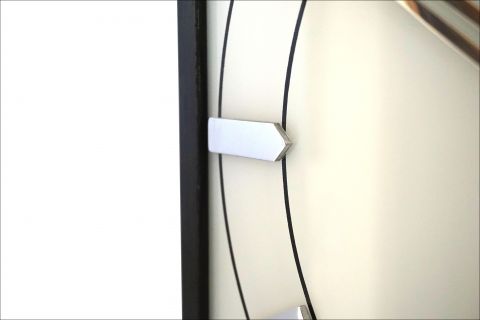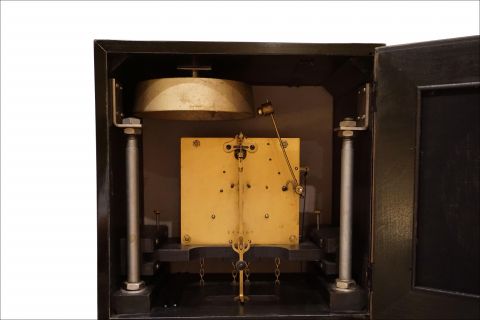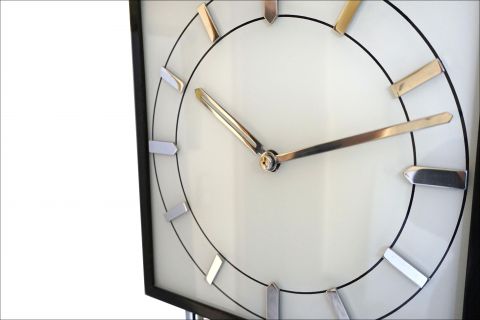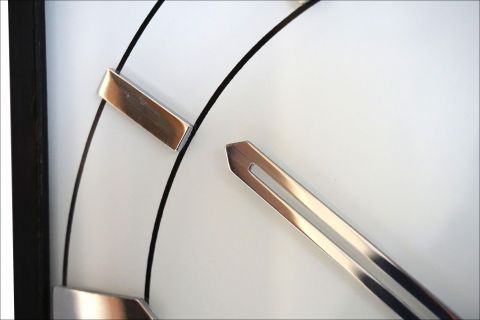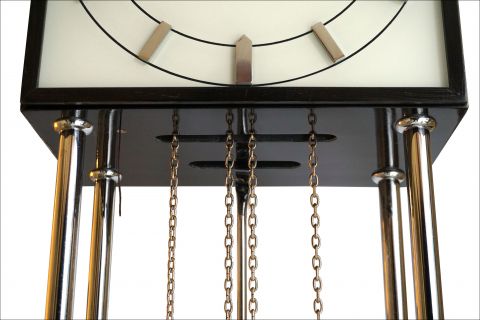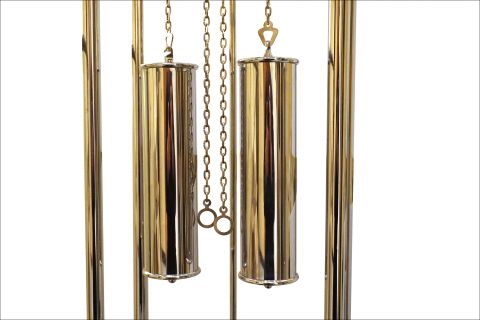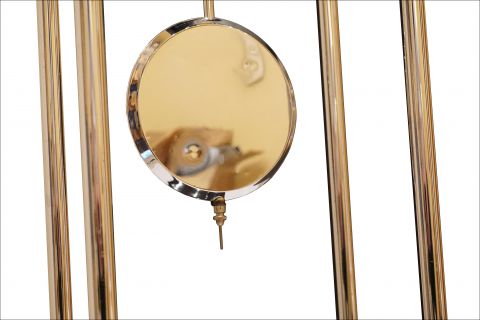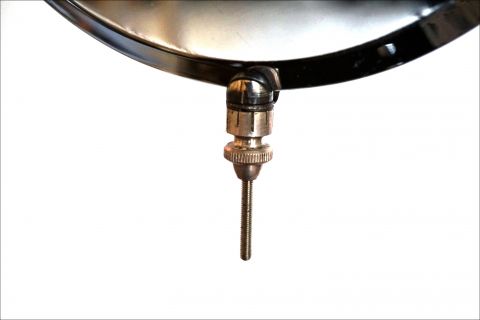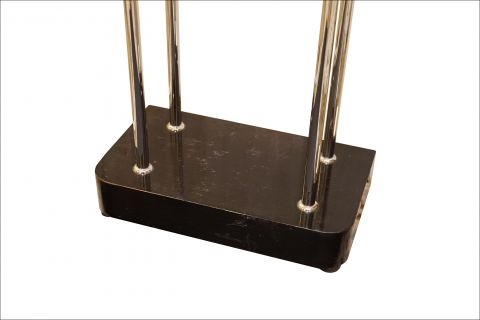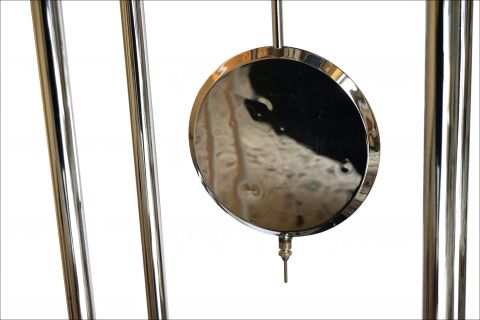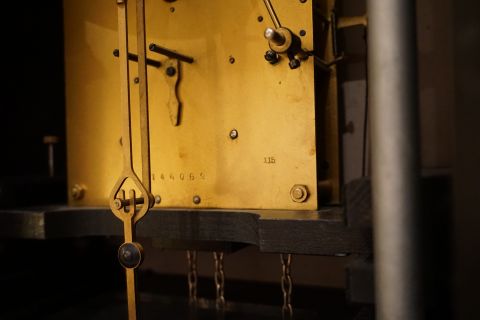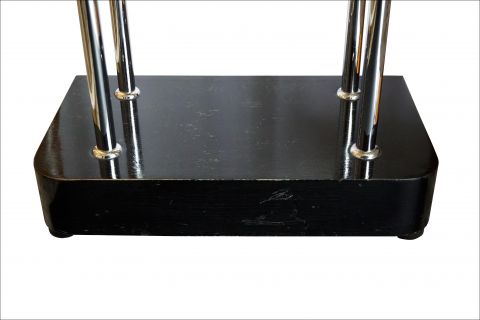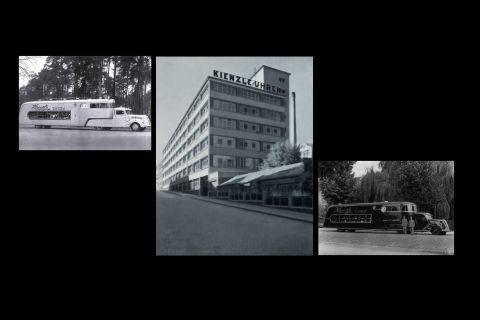This longcase clock offered here, or as Kienzle himself called it so beautifully , "Haus Uhr" (home clock) corresponds to the spirit of the time of the clear modernism and emerging German modernity.
Arts and crafts schools such as the Bauhaus or Burg Giebichenstein are breeding nests of this new way of thinking... freed from kitsch and superfluous ornamentation and concentrated on the essentials.
The Kienzle clock factory in the Black Forest, already world-famous for high-quality clocks and measuring devices such as speedometers, felt the shock waves of the economic crisis of the 1920s like many other clock manufacturers.
High unemployment and the resulting lower purchasing power have already caused many of other competitors to close.
However, Kienzle escaped this crisis better, thanks to procedures optimized in the mid-1920s based on the American model. In addition, through open and modern marketing on a broad front, which has been in use since 1931.
Compared to the competition, the new CEO Schmoller (formerly at DUFA) positioned Kienzle as a quality brand even more than before. Solid workmanship, better and high-quality materials and a good design should be the future strategy. The arrival of modernity was also reflected outside of the watch products.
Built in 1928, the new functional building for the case production is reminiscent of Bauhaus designs.
Modern, streamlined and design-focused Kienzle demonstration trucks drove across Germany.
These 16 meter long display vehicles were a novelty and often besieged wherever they appeared - luxury, quality and elegance. Equipped, so that 75 people could be accommodated on the 4 floors on display.
Inside with a watch exhibition for professionals, outside with showcases for the public. With its own radio, gramophone and loudspeaker system, as well as 2 beds, 6 tubular steel armchairs, washing and rinsing places and a refrigerator. At that time without competition.
This goal of modernism was only achievable with and through Heinrich Möller, who switched to Kienzle after taking over Dufa.
Long before Max Bill or Dieter Rams perceived the watch as a design object for Junghans or Braun, Heinrich Möller paved the way for modern watch design and set the style for the decades that followed.
Heinrich Johannes Möller:
- April 21, 1905 Wiesbaden - February 21, 1983 Villingen Schwenningen.
- 1920-1926 apprentice and journeyman as a carpenter at Heinrich Roth with subsequent years of practice.
- 1926-1927 technical school for carpenters in Blankenburg.
- 1927-1931 Employed as a designer for the design of modern cases and exhibition rooms at the German watch factory ( Deutsche Uhren Fabrik) DUFA in Mühlhausen/Thuringia.
- Taken over from Kienzle in 1931 through the takeover of the economically ailing DUFA.
- At Kienzle from 1931 head of the design and architectural office with overall creative conception by Kienzle.
As early as 1932, Kienzle received half of all prizes in the design competition of the Society for Time Measurement and Watch Technology, and in 1940 Möller's designs also received the gold medal at the Triennale in Milan for good design.
The house clock offered here is probably one of Heinrich Möller's rarest clocks - then as well as today.
It was first listed in Catalog 634 by Kienzle in 1934 and was last listed in Catalog 139 from 1939.
The purchase price in the 1938 catalog 836 was 210 Reichsmarks, which was an enormous amount at the time.
Because in addition to the new materials and sophisticated, avant-garde designs, Kienzle naturally also continued to offer traditional models in classic watchmaking made of oak or walnut.
Not everyone could and wanted to surround themselves with so much new design. At the same time as this awakening of modernity the National Socialists moved into the German population and many similar modern objects and works of art were considered degenerate art or the artists were persecuted or were subjected to reprisals.
According to a conversation between Heinrich Möller's son and the director of the German watch museum,
only around 50 of this watch were made over the years.
It is all the more logical that there are hardly any models of this specimen nowadays.
Such a modern, sophisticated and elegant watch was usually more likely to be found in the big cities like Berlin, Hamburg, Dresden and Stuttgart, and not in the rural areas.
Due to the war, however, the cities in particular were bombed and destroyed. A small table clock could still be packed when fleeing to the countryside....a longcase clock usually just stayed where it was and was destroyed....especially if it was as graceful and filigree as this one. The unprotected glass dial may not have survived many bombardments and attempted escapes. Based on previous and extensive research, we are only aware of 2 other examples, one of which is in the German Watch Museum. Of course there may still be 1-3 more here and there... with such a small number of units produced, you can count them on one hand.
Without wanting to appear esoteric, but this grandfather clock has a calming character.
In all the time with us, the gentle tick-tock in the background sets a solid speed.
Every half hour by a single bell, or on the full hour the bell makes a small concert. But really not disturbing. In addition, the chime can also be switched off, as well as let it sound again by means of a small string on the underside of the housing.
Coupled with the airy, timeless design and the pleasant size, really enchanting.
In today's hectic world, where you can find out the time in no time on any mobile phone, radio or screen,
this clocks grounds one, which surprised even us.
The watch is in fantastic museum condition.
Even the/a watchmaker's sticker is still there alongside a handwritten note from 1939.
Whether it is the production date or just a watchmaker's note is unknown.
The lacquered wooden parts made of deep black piano lacquer are completely original.
Age-appropriate shrinkage cracks in the paint create a lovely and original patina that needs to be preserved.
We protected these with a ph-neutral museum wax...so you can just enjoy.
The chromed elements such as numbers, pointers, pendulums, weights, as well as tubular steel supports and support plates still have the original chrome and are also in very nice condition.
The pendulum shows slight irregularities on the pendulum plate, but these are still not disturbing.
The movement runs wonderful and even after a week, it shows little to no offset to a radio-controlled digital watch.
The watch can be shipped worldwide. The transport would be horizontal. Weights, pendulums, and possibly the dial and clockwork would be dismantled and stored separately. Please ask us about this.
